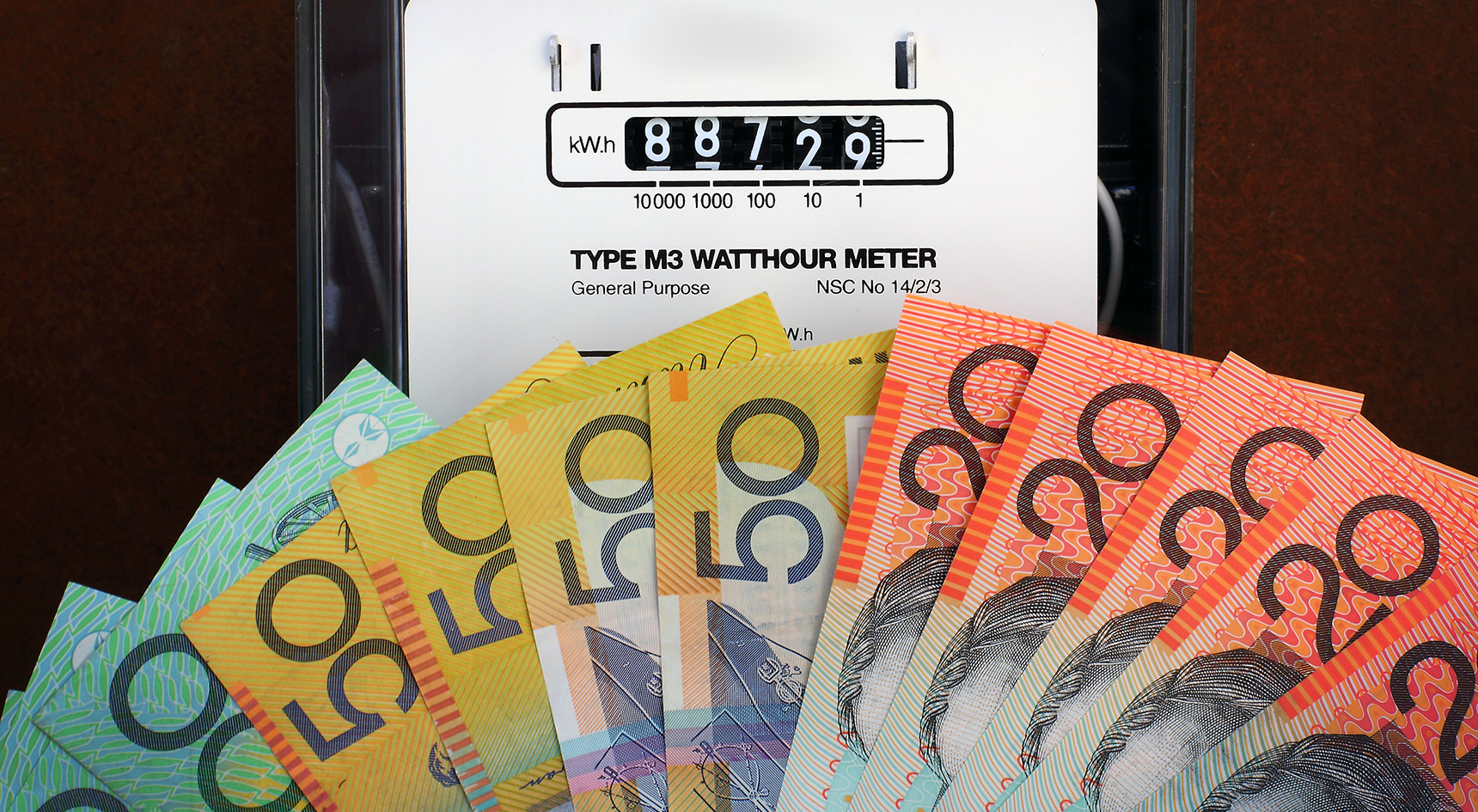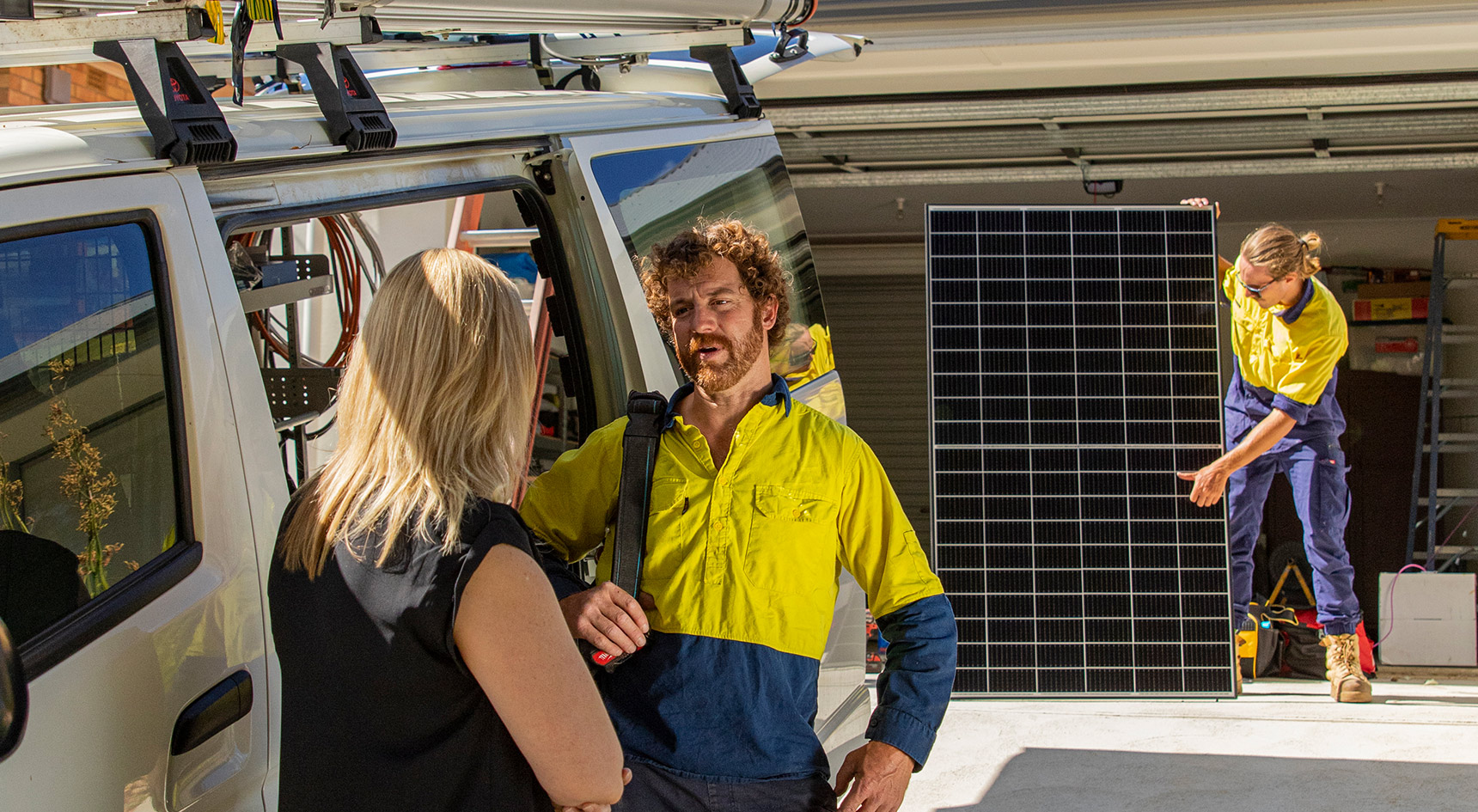By Andrew Rasch
Published: Friday, March 1, 2024
Ready to go solar? You’re in good company. Australia has the highest solar uptake in the world, with a combined capacity of more than 11 gigawatts.
More than 30 per cent of Australian households now have rooftop solar, according to the Australian Renewable Energy Agency (ARENA).
The Australian Trade and Investment Commission also predicts that by 2050, solar PV (electricity generation using photovoltaic cells) will be the world’s leading green energy technology.
If you need to freshen up on some common solar energy terms, our glossary will help. Otherwise, read on to find out the steps you should take before going solar.
Solar energy 101
A solar photovoltaic (PV) system uses solar panels – which are usually installed on your roof – to convert sunlight into direct current (DC) electricity. An inverter then converts the DC to alternating current (AC) electricity for use in your home.
The power your system produces is used by your home or business first before any excess is sold to your energy retailer or stored in a battery if you have one installed. If solar energy isn’t being collected (for example, at night) and your battery is depleted, the electricity grid will provide what you need to keep the power on.
Do your homework
There’s a lot to learn about solar but you can get started by checking your energy bills and your average daily electricity consumption. Check whether you use electricity mostly at night or during the day. This will help determine how many kilowatts your system should be to meet your needs.
Also consider the size of your roof (and how shady it is), your budget, applicable feed-in tariffs, and any available rebates and incentives you can access, such as the Small-scale Renewable Energy Scheme.

Cost vs payback time
RAA Solar Product and Pricing Manager Dennis Taarnby says that for most households, solar is worth the upfront cost.
“These days it’s more affordable to have a system installed, and our high power prices have helped reduce the time it takes to recoup your investment.”
A home using an average of 15kWh to 18kWh of electricity per day, with a 6.6kW solar system, will save about $2000 per year on their energy bills.
“Cost is important, of course, but watch for retailers selling cheap, poor quality and unethically sourced panels and inverters,” Dennis says.
“The saying ‘you get what you pay for’ is truer than ever when it comes to solar energy systems.”
Battery or no battery?
A battery can save you even more money by storing the energy your solar system produces during the day for you to use at night. South Australians lead the nation in battery storage and since 2020, more than 21,000 homes and businesses have had a battery installed.
That said, installing a battery storage system isn’t right for everyone and will increase the time it takes to recover the purchase price, so check with RAA Solar first.
“In some cases, people choose to install a system that gives the option of adding a battery later,” Dennis says.
“We can also advise whether you can add a battery to your existing system.”

Cash or finance
So, how are you going to pay for your new solar system? If you have the money in your account to cover the cost, all credit to you (no pun intended). But there are options if you’d like to pay it off over a longer term.
RAA is now partnering with green finance provider Plenti to offer new, long-term finance options for its solar and battery systems and home electric vehicle (EV) chargers for RAA members.
This includes no up-front deposit, with the option for members to pay off their system in monthly instalments over three to 10-year periods. You can find out more here.
Need help?
We’ve only scratched the surface of all there is to know about solar energy. If you want to learn more about how much you might save, or what system suits your needs, contact RAA Solar online or call 8202 8078 to set up a 30-minute, no-obligation consultation.